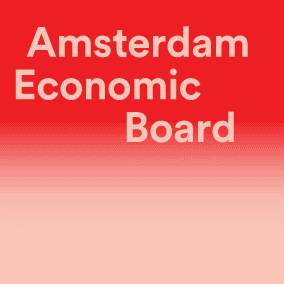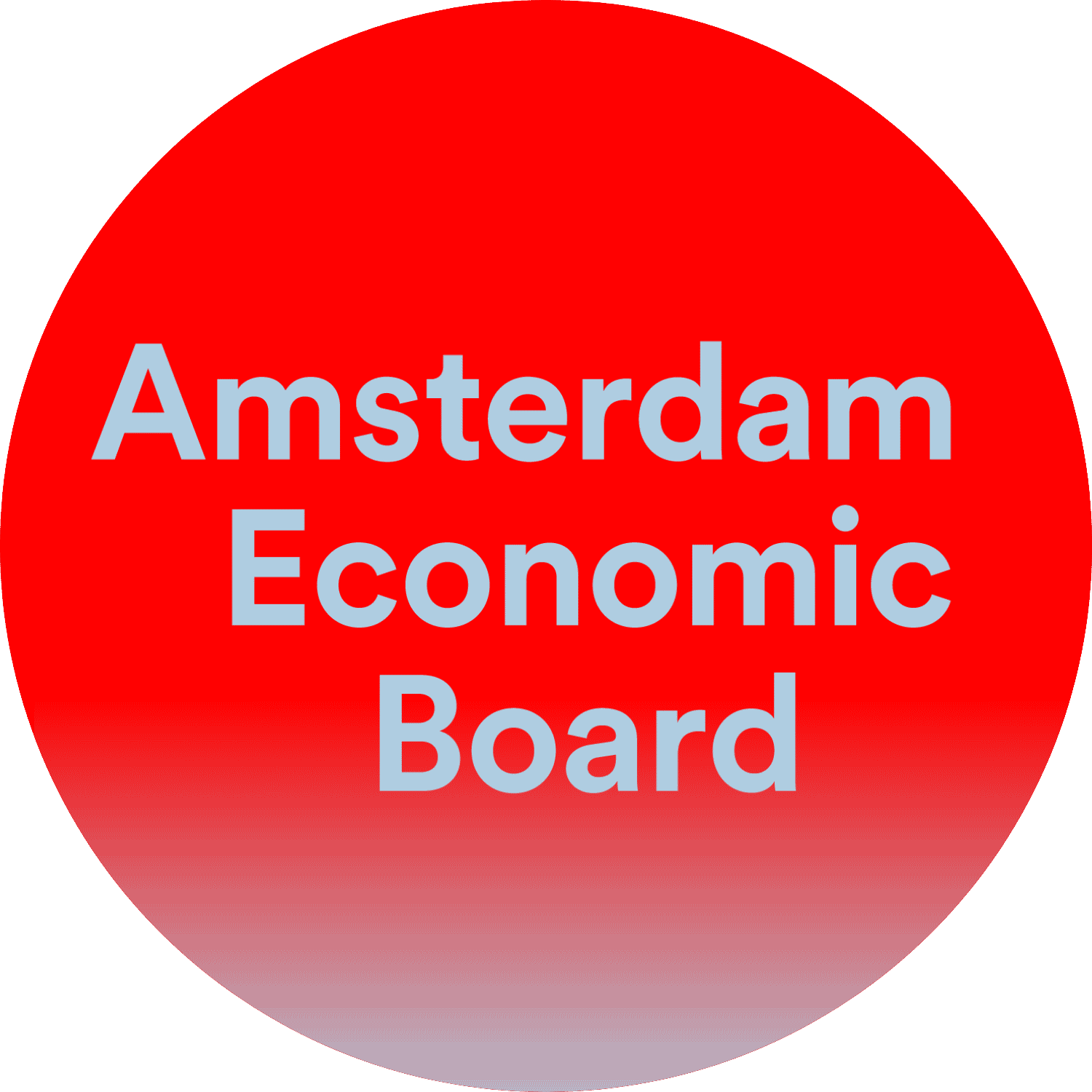Circulair textiel bezig aan opmars in Metropool Amsterdam
De textielindustrie is een van de meest vervuilende industrieën ter wereld. Textielproductie vervuilt rivieren, gebruikt overmatig water en chemicaliën en vindt plaats onder slechte werkomstandigheden. En dat alleen maar om onze kledingkast voor een zeer lage prijs te vullen. Gelukkig zijn er heel erg veel hoopgevende initiatieven om het anders, beter te doen. Ook in de Metropool Amsterdam, zo vertelt Stef le Fèvre, van de gemeente Amsterdam. Wat gebeurt er al en hoe kunnen we impact maken?
Babette Porcelijn laat met haar boek ‘Verborgen Impact’ al zien dat het terugdringen van CO2-uitstoot en andere milieu impact begint bij onze consumptie van voedsel, spullen en kleding. “Ook lokaal kunnen we dus impact maken”, zegt Stef le Fèvre. “Bijvoorbeeld door de inzameling, sortering en verwerking van textiel op een verantwoorde manier te organiseren en te streven naar transparantie in de keten en een zo circulair mogelijke verwerking.”
Le Fèvre is strategisch adviseur afvalketen bij de gemeente Amsterdam en is bezig met de textielinzameling en verwerking. De gemeente is namelijk verantwoordelijk voor inzameling én verantwoorde verwerking van textiel. “De Metropool Amsterdam zamelt nu jaarlijks 12,8 miljoen kilo textiel in, het potentieel is volgens een MRA studie zo’n 26 miljoen”, vertelt Le Fèvre. “De landelijke doelstelling is dat we meer gaan inzamelen, maar we weten ook dat we dan meer niet-herdraagbaar en niet makkelijk te recyclen textiel ophalen. Dat betekent overigens niet dat we het niet moeten doen! We moeten juist aan de slag met oplossingen om de keten circulair te krijgen en van oude kleding weer nieuwe kleding maken. Kleding kan langer kleding blijven. We kunnen het repareren, hergebruiken, delen, er minder van kopen en betere kleding kopen. Mijn persoonlijke doel is elk jaar alleen te kopen als ik écht iets moet vervangen Er zijn ook oplossingen nodig voor niet-herdraagbaar textiel: van oude draadjes weer nieuwe draadjes maken, zodat van oud textiel nieuw gebruikstextiel wordt gemaakt. Dat klinkt makkelijk maar dat is het niet, het vraagt samenwerking in de hele keten.”
Wat vind jij de meest bijzondere circulaire initiatieven in de regio?
“Er gebeurt al heel veel. Er zijn veel ontwerpers, modemerken en initiatiefnemers, die elk op hun manier antwoorden zoeken en de textielwereld willen helpen veranderen. Neem House of Denim, een stichting die zich inzet voor duurzamer jeans. En in Zaanstad werkt Wieland Textiles met het bedrijf Loop a Life en de gemeente Zaanstad aan hoogwaardige en mechanische sortering van niet-herdraagbaar textiel. Dit is een prachtige ontwikkeling in de keten van inzamelen naar recyclen, want je krijgt inzicht in de samenstelling van textiel, je kunt sorteren op kleur, textuur. Op basis hiervan kunnen verdere productiestappen gezet worden, als de afzet er maar komt.
Waag heeft al het Textile Lab, en kijkt ook naar de tech-kant: hoe kan technologie de textielsector ondersteunen en beter maken?” Zij hebben het initiatief genomen om samen met Pakhuis de Zwijger, Metabolic, Dyne en BMA Technology te werken aan een circulaire keten en daarbij bewoners en ondernemers te betrekken. De gemeente Amsterdam maakt hier onderdeel van uit.
“Er is een koplopersgroep van duurzame en circulaire hotels, met samen tien procent van de hotelbedden in de stad. Zij besteden aandacht aan circulair inkopen van bed en badlinnen, met de wasserijen die eigenaar zijn van dit linnen. Fashion for Good, dat onder meer door de C&A Foundation wordt ondersteund, opende onlangs een expositie op het Rokin over de kledingindustrie en lanceerde een startup-programma in Azië.”
“Het Ware Westen wil van West-Amsterdam een district voor duurzame mode maken. Het bedrijf Palais de L’eau won een lokale prijs voor hun circulaire babyhanddoeken. De initiatiefneemster kon met de prijs een pop-upstore openen aan de Kinkerstraat, om ook in de winkelstraat aandacht te vragen voor circulair textiel en recycling.”
“De vraag is natuurlijk hoe je al deze initiatieven waar nodig verbindt en impact maakt. Een duidelijke marsroute helpt hierbij. Waar is deze regio sterk in, en hoe is de Metropool Amsterdam complementair aan andere, van oudsher echte textielregio’s in het land en daarbuiten? Wij kunnen niet alles in een regio oplossen en ook niet alleen in Nederland. Europese samenwerking is belangrijk voor een circulaire textielketen, daar kunnen wij vanuit onze regio aan bijdragen.”
Wat is de sleutel tot succes?
“Samenwerken, de samenwerking zoeken met andere regio’s en een vorm van samenwerking vinden die recht doet aan de complexe keten, aan de verschillende belangen en expertises. Het momentum is er. Landelijk komt er beleid voor circulair textiel. De gemeenteraad van Amsterdam heeft in 2018 een initiatiefvoorstel aangenomen om koploper circulair textiel te worden en er zijn al veel initiatieven. Die zichtbaar maken en vervolgens werken aan impact is de sleutel tot succes.
“Ik kan dat doen binnen mijn eigen expertise. Gemeenten kunnen anders naar textielinzameling gaan kijken. In Amsterdam ronden we dit jaar de aanbesteding voor de inzameling en verwerking van textiel af. Die gaat leiden tot vernieuwing in de inzameling en verwerkingsroutes en bijdragen aan een meer circulaire keten. In de Metropool Amsterdam kunnen we als overheden in ieder geval ons eigen textiel zo circulair mogelijk inkopen. Bij ons is dat al het uitgangspunt, maar dat vraagt wel om kennis en expertise om het juiste uit te vragen en aan te sluiten bij wat er al kan. We gebruiken daarvoor ook de kennis en expertise uit ons netwerk.”
“Labels en keurmerken kunnen helpen, of bijvoorbeeld een percentage circulair textiel verplicht stellen en een prijsvoordeel geven aan circulair textiel. Ook moeten we andere vormen van ontwerp- en retail concepten helpen opschalen. De crux is om écht te durven interveniëren in het systeem. Zodat afzet ontstaat. Daarvoor hebben we ook het Rijk en Europa nodig.”
Aantal feiten op een rij
De gemiddelde Nederlandse garderobe bevat 173 kledingstukken, waarvan er zo’n vijftig grotendeels onaangeroerd blijven. Nederlanders kopen gemiddeld 46 nieuwe kledingstukken per jaar en gooien er vervolgens 40 per jaar weg. Van de 40 afgedankte kledingstukken worden er slechts 16 hergebruikt of recycled. We bezitten gemiddeld zeven tweedehands items per persoon. Deze bevindingen zijn gebaseerd op de kastinhoud van zo’n vijftig ondervraagden. Nederlanders consumeren wel minder kleding dan inwoners van Denemarken, Duitsland en Engeland. Om een kilo katoen te telen is ongeveer 10.000 kilo water nodig. Dat is al gauw 2500 liter per shirt en meer dan 7000 liter per spijkerbroek. Al dat water wordt onttrokken aan rivieren, meren of ondergrondse waterreserves. Daardoor ontstaan watertekorten voor de lokale bevolking en wordt de bodem aangetast.
Er zijn diverse initiatieven wereldwijd om kleding te leasen (bijv. Mud jeans), te lenen of te ruilen.
Dit artikel is deel 11 van de reeks over circulaire grondstofstromen in de regio:
- Bekijk hier artikel 1: Half miljoen dataservers jaarlijks afgedankt in Nederland
- Bekijk hier artikel 2: Hoogwaardige verwerking van voedselresten
- Bekijk hier artikel 3: Bermgras als groene grondstof
- Bekijk hier artikel 4. E-waste hergebruiken
- Bekijk hier artikel 5: Start hergebruik van miljoenen luiers
- Bekijk hier artikel 6: Van afgedankt textiel naar nieuwe garens
- Bekijk hier artikel 7: Groente-, fruit- en tuinafval: het begin van iets moois
- Bekijk hier artikel 8: Export van 100 vrachtwagens metaalschroot per dag
- Bekijk hier artikel 9: Bermgras waardevol isolatiemateriaal: afnemers gezocht!
- Bekijk hier artikel 10: Een miljoen matrassen niet verbranden maar recyclen
Lees hier meer over het Circulaire Economie Programma van de Board.
Wil jij voortaan ons belangrijkste nieuws in je mailbox ontvangen? Meld je dan hier aan voor onze maandelijkse Board Update.
6 februari 2020
Meer weten over
Neem contact op
Blijf jij ook op de hoogte?
8x per jaar nieuws en events uit de regio: schrijf je in voor de Board Update nieuwsbrief
Deel dit artikel
Wil je op de hoogte blijven?
Volg ons dagelijks op LinkedIn en schrijf je in voor de Board Update nieuwsbrief.
Lees ook deze berichten
- Met de selectie van vier kanshebbers is de regionale voorronde van de ...
- Met meer dan 80 ondernemers, 40 investeerders en diverse dienstverleners bood LSH Capital Match ...
- In tijden van geopolitieke spanningen, technologische revoluties en politieke onzekerheden is het ...


